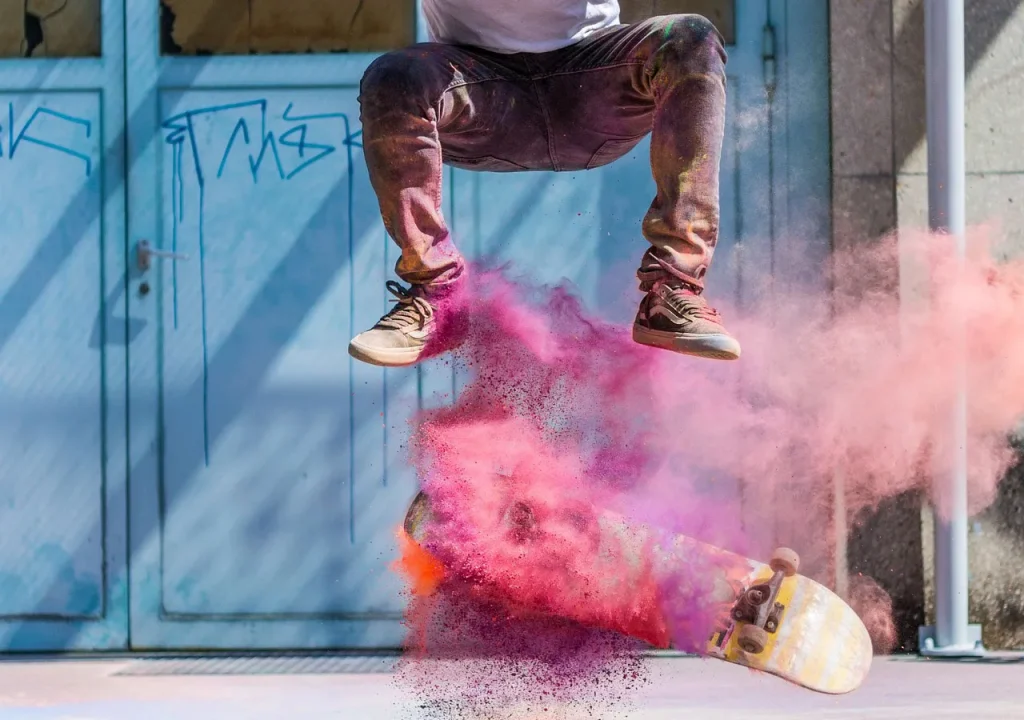Now Reading: Actinic Keratosis: Spotting, Treating, and Preventing “Sun Scars”
-
01
Actinic Keratosis: Spotting, Treating, and Preventing “Sun Scars”
Actinic Keratosis: Spotting, Treating, and Preventing “Sun Scars”
Actinic Keratosis: Your Ultimate Guide to Spotting, Treating, and Preventing “Sun Scars” 🌞⚠️
Did you know that those rough, scaly patches on your skin could be a ticking time bomb? Meet actinic keratosis (AK)—the precancerous skin condition that’s silently lurking on millions of sun-worshippers. Let’s decode this stealthy threat, arm you with life-saving knowledge, and share real-life strategies to keep your skin safe!
What is Actinic Keratosis?
Actinic keratosis (pronounced ak-TIN-ik ker-uh-TOE-sis), also called solar keratosis, is a skin condition caused by years of sun damage. It shows up as rough, scaly patches on sun-exposed areas like your face, ears, hands, and forearms. Left untreated, 1 in 10 AK lesions can turn into squamous cell carcinoma, a type of skin cancer (Source: American Academy of Dermatology).

🔑 Key Facts at a Glance
| Aspect | Details |
|---|---|
| Nicknames | Solar keratosis, senile keratosis |
| Common Areas | Face, ears, scalp, neck, hands |
| Risk Group | Adults 35+, fair-skinned individuals, outdoor workers |
| Danger Level | Precancerous—early treatment prevents cancer |
| Global Impact | Affects over 58 million Americans (Source: Skin Cancer Foundation) |
Spot the Signs: Is That Patch Cancerous? 🚨
AK lesions are sneaky—they grow slowly and often go unnoticed. Here’s what to look for:
- Texture: Sandpaper-like, dry, or crusty patches.
- Color: Pink, red, brown, or flesh-toned.
- Size: Ranges from a pinhead to over an inch wide.
- Sensations: Itching, burning, or tenderness.
⚠️ Red Flags:
- Rapid growth or bleeding.
- Hard, wart-like surface.
- Patches that reappear after treatment.
What Causes Actinic Keratosis? ☀️
UV radiation is the villain here! Whether from the sun or tanning beds, UV rays mutate skin cells (keratinocytes) over time.
Top Risk Factors
- Sunburns in Youth: Even one blistering burn raises your risk.
- Fair Skin: Less melanin = less protection.
- Living in Sunny Climates: Arizona residents, we’re looking at you!
- Weakened Immunity: Organ transplant patients are 100x more likely to develop AK (Source: Journal of Clinical Oncology).
Diagnosis: How Doctors Catch AK Early 🔍
Most cases are diagnosed in minutes through a visual exam. For tricky spots, a skin biopsy confirms the diagnosis.
What to Expect During a Biopsy:
- A tiny skin sample is taken (local anesthesia minimizes pain).
- Lab tests check for cancerous cells.
Treatment: Erasing Sun Damage Before It’s Too Late 🏥
1. Topical Creams (DIY Treatment)
- Fluorouracil (Efudex): Targets abnormal cells—“It looks worse before it gets better!”
- Imiquimod (Aldara): Boosts your immune system to fight lesions.
- Diclofenac Gel: Reduces inflammation (gentler option).
2. In-Office Procedures
- Cryotherapy: Freezes lesions off with liquid nitrogen (instant results, but may blister).
- Photodynamic Therapy (PDT): Light-activated treatment that zaps lesions.
- Curettage: Scraping + electrosurgery for stubborn patches.
3. Natural Healing (For Mild Cases)
- Sun Avoidance: Some AKs fade if you ditch UV exposure completely.
Prevention: Save Your Skin From Sun Sabotage 🛡️
Sunscreen is Non-Negotiable!
- Use SPF 30+ broad-spectrum sunscreen daily, even on cloudy days.
- Reapply every 2 hours—no exceptions!
Other Armor-Up Tips:
- Wear UPF 50+ clothing and wide-brimmed hats.
- Avoid peak sun (10 AM–4 PM).
- No Tanning Beds—Ever. They emit 12x more UVA than the sun (Source: FDA).
5 Life-Saving FAQs ❓
- Can actinic keratosis turn into cancer?
Yes! 5–10% of untreated AKs become squamous cell carcinoma. - Do AKs go away on their own?
Sometimes, but why gamble? Treatment slashes cancer risk. - Is AK contagious?
Nope! It’s caused by UV damage, not germs. - How long does treatment take?
Cryotherapy: 1 session. Creams: 2–12 weeks. - Can diet help prevent AK?
Antioxidant-rich foods (berries, spinach) may boost skin defense.
Nutrition: Eat Your Way to Healthier Skin 🥑
| Eat More | Avoid |
|---|---|
| Fatty fish (omega-3s) | Processed meats (bacon, sausages) |
| Citrus fruits (vitamin C) | Sugary snacks (cookies, soda) |
| Spinach (magnesium) | Alcohol (dries out skin) |
Pro Tip: Green tea’s polyphenols may repair sun damage (Source: Journal of Nutrition).
Real-Life Victory: How Maria Beat AK 🌟
Maria, 52, spent years gardening without sunscreen. When rough patches appeared on her cheeks, her dermatologist diagnosed AK. After PDT therapy and switching to SPF 50, her skin healed completely.
“I thought it was just aging. Now I’m a sunscreen evangelist!”
Final Thoughts: Knowledge = Power 💡
Actinic keratosis is a wake-up call—not a death sentence. Early action saves lives. If you spot suspicious patches, see a dermatologist ASAP. For more resources, visit focusmind.io.
📱 Struggling to find reliable clinics or tailored advice for your condition?
Join our FREE WhatsApp community [HERE] to connect with others facing AK. Our team will research the best clinics, diet plans, and treatments in YOUR area—saving you time, money, and stress. Together, we’ll fight sun damage smarter! 🌟
Disclaimer: This article is not AI-generated. The information provided here is sourced from reputable medical professionals and organizations. It is intended for educational purposes only and is not a substitute for professional medical advice. Always consult a healthcare provider for personalized guidance.
Stay Informed With the Latest & Most Important News
Previous Post
Next Post
-
 01Top Tips to Stay Motivated and Avoid Burnout While Working Remotely
01Top Tips to Stay Motivated and Avoid Burnout While Working Remotely -
 02How to Pose People Who Are Not Models for Natural and Authentic Portraits
02How to Pose People Who Are Not Models for Natural and Authentic Portraits -
 03New Study Reveals Simple Lifestyle Changes Linked to Longer Life
03New Study Reveals Simple Lifestyle Changes Linked to Longer Life -
 04Foods Recommended by Doctors to Boost Your Immune System Naturally
04Foods Recommended by Doctors to Boost Your Immune System Naturally -
 05Smartphone Hacks Everyone Needs to Know to Extend Battery Life
05Smartphone Hacks Everyone Needs to Know to Extend Battery Life -
 06Travel Experts Predict Top Destinations to Shape 2024 Tourism
06Travel Experts Predict Top Destinations to Shape 2024 Tourism -
 07Global Markets Rebound as Inflation Worries Ease for Investors
07Global Markets Rebound as Inflation Worries Ease for Investors





















